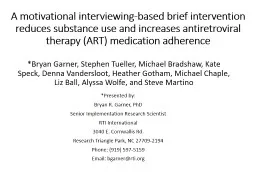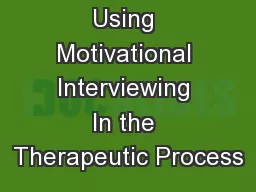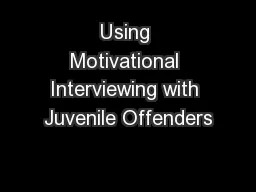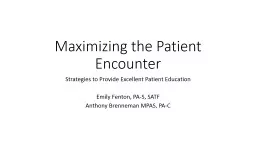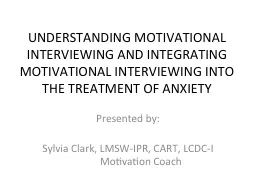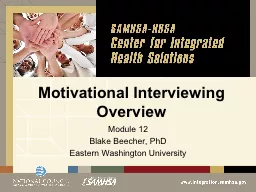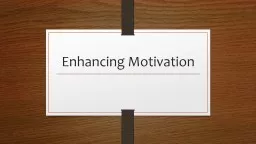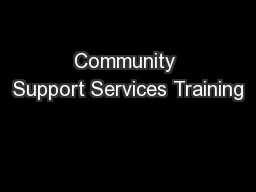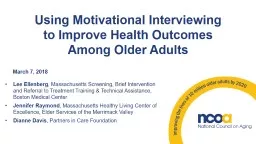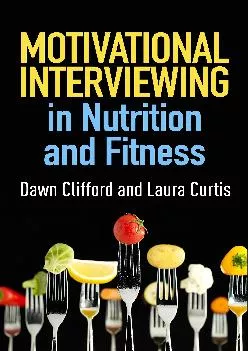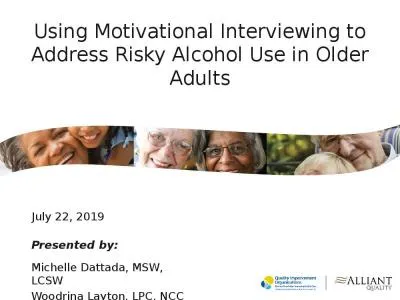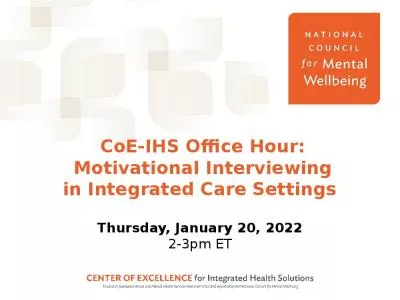PPT-A motivational interviewing-based brief intervention reduces substance use and increases
Author : nersonvisa | Published Date : 2020-08-27
Bryan Garner Stephen Tueller Michael Bradshaw Kate Speck Denna Vandersloot Heather Gotham Michael Chaple Liz Ball Alyssa Wolfe and Steve Martino Presented
Presentation Embed Code
Download Presentation
Download Presentation The PPT/PDF document "A motivational interviewing-based brief ..." is the property of its rightful owner. Permission is granted to download and print the materials on this website for personal, non-commercial use only, and to display it on your personal computer provided you do not modify the materials and that you retain all copyright notices contained in the materials. By downloading content from our website, you accept the terms of this agreement.
A motivational interviewing-based brief intervention reduces substance use and increases: Transcript
Download Rules Of Document
"A motivational interviewing-based brief intervention reduces substance use and increases"The content belongs to its owner. You may download and print it for personal use, without modification, and keep all copyright notices. By downloading, you agree to these terms.
Related Documents

